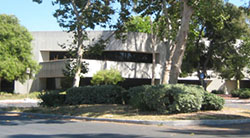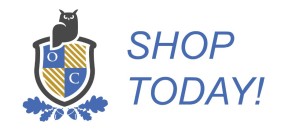
Just what is “the box” when it comes to gifted learners? What is the standard measure of education for those who are gifted and for those who are both gifted and challenged in some way? It seems like the box has changed over the years depending on the definition of gifted at any one time. For many years, gifted children were identified by IQ tests only, and these children were given Individualized Education Programs (IEP) to support their learning needs.
These children were placed in separate, special education classrooms instead of being kept in general classrooms. One main reason is that teachers in general education classrooms are not trained to handle the challenges of gifted students. They are overwhelmed and are really forced to provide general education at the expense of gifted education.
General classroom teachers do not have the expertise, in most cases, to modify their classroom to accommodate those with special needs. So, in addition to student failures, we can also talk about teacher failures to provide support for all classes of students.
But teachers are not about to fail. They are resourceful and given the latitude to make changes, are at the center of the movement back to inclusion.
Changes to Traditional Thinking of Special Education
More recently, we have seen swings in how gifted students are being taught, from individualized instruction in special ed classes to instruction in general classrooms based on what works best for all students.
This change has been driven by parents concerned that their gifted and talented children are not being given the right opportunities and support for growth. Parents feel their children miss a lot when pulled out of the general classroom. And they are not in a fully representative classroom when they work with other gifted students. They miss the cross-cultural and behavioral influences that will help them grow socially and emotionally.
But life in the general classroom without the recognition of who these gifted children are and why they seem different is a trying experience for those who are gifted. These children get frustrated because they can’t make sense of the teaching style being used. And they are frustrated because other children aren’t ready to have discussions on topics to the same level of detail that they want.
While gifted and talented children want to discuss topics in greater detail, they are stumped by questions that ask them to make inferences. They have definitely different styles of learning. What works best for one student does not for another. And that is both the problem and the challenge to find a solution that does work for everyone.
Teachers Have Their Hands Full
Teachers are not ready to handle these gifted differences. They must deal with a classroom of learners in the general population who also have different abilities and behavioral issues. They have to worry about measurements and grading and reporting. They have to administer standardized testing and justify classroom performance improvement. They get frustrated by the asynchronous development and emotional escalation of gifted students with disabilities (or any students with disabilities). Many times, teachers feel they are failing the students and are failing as teachers.
Parents Seek Change, New Approaches
Parents are concerned about their gifted children and have seen failures of special ed programs and teachers caught in the middle. Some of these parents are working with forward-thinking schools and school systems to come up with strategies that address different learning styles within the general classroom. They are looking at what is best for each student, how each student learns differently, and how best to accommodate those differences. And this is for all students, not just the gifted ones.
New strategies include programs to support gifted students in learning how to interpret social clues and expectations in various classrooms. Social workers observe the classroom environment with and without the gifted students to see how they react and how the classroom reacts. They can then debrief the gifted students on what clues they missed or misinterpreted so they are better prepared to handle classroom interaction.
Strategies also include support for the teacher in allowing changes to traditional procedures like stating ground rules for a class activity or letting students use multiple means of showing they have learned something. Some students give oral reports, others,written reports, and still others, photographic or video reports. Students can also do independent study projects that offer an opportunity for greater depth of learning and exploring. These alternatives support the different learning styles of all students, not just the gifted ones and are inclusionary.
Collaboration Is Key
The key to this change is holding IEP meetings in middle school involving parents, teachers, and support professionals, all of them thinking outside the box to create workable solutions for the different learning problems of all students.
These meetings should consider the principle of developing teaching strategies that help children with disabilities – all children. Professional development and support for teachers is another important element. And collaboration and innovative thinking among all parties should be the norm and not the exception.
Success Breeds Success
Parents can see the difference. Gifted learners can spend most of their time in high school general classrooms and can take AP courses along the way. They can do independent work in the library and use other sources to further develop their skills on topics of interest to them. This approach is part of a one-of-a-kind hybrid IEP program created to meet the unique needs and challenges of the “twice-exceptional” student.
The success that has been shown in schools professing this kind of collaboration is due tostrong leadership in the school, dedicated teachers who want to serve all students equally, and interested parents who want to be involved in the educational direction of their children.
The goal of this collaboration is to create a school classroom environment where everyone is thinking outside the box, and where effective special education is not done just by special ed teachers in special ed classrooms, but by general education teachers in general education classrooms.
Providing an opportunity for students to express themselves in different ways, using different media and tools, with different timelines, is a strategy that works for all students. As resourceful teachers start to provide examples of flexible instruction and multi-media expression from students, more schools will follow suit and the box will be open.




